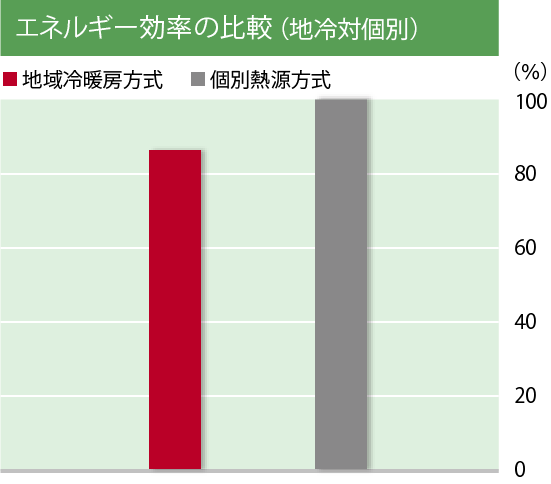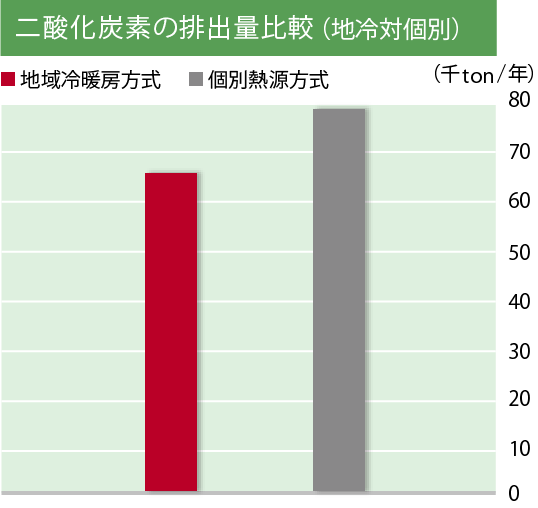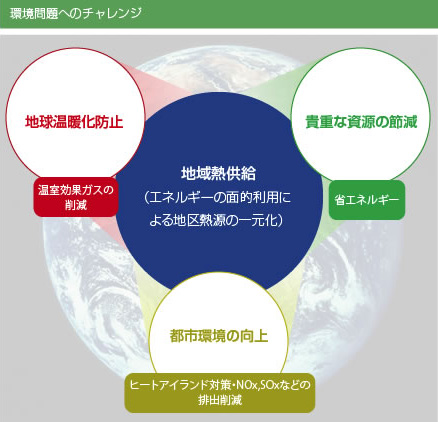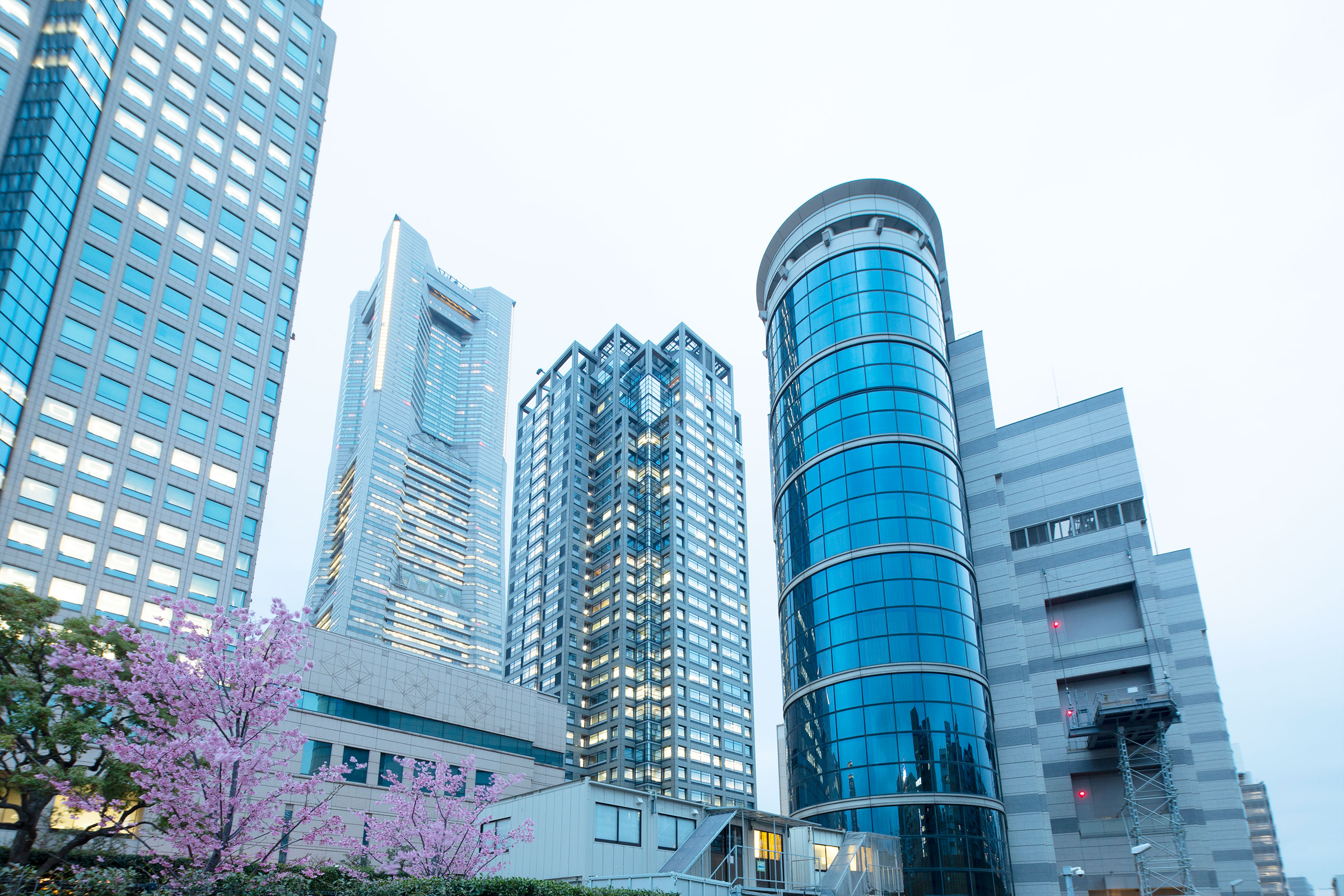Centralizing the heat sources for the district reaps enormous environmental benefits. It enables MM21 DHC to reduce energy consumption, trim greenhouse-gas emissions, dramatically decrease emissions of nitrous oxides and sulfur oxides that can cause acid rain and counteract the heat-island effect.
Energy Savings
Installing equipment in a central location improves operating efficiency. Also, by adopting advanced systems with highly efficient energy storage and so on, MM21 DHC is able to reduce energy consumption across the entire supply district, contributing to reduced consumption of precious energy resources.
Individualized heat-source systems make it difficult to optimize the capacity of heat-source equipment for heating and cooling demand levels in many cases, resulting in low operating load. In contrast, DHC can marshal large, high-performance equipment that can respond to heating and cooling demand in the district as a whole, operating at high load for excellent energy efficiency (reduction of primary energy consumption). In the case of MM21 DHC, this effect represents a saving of approximately 15%

Restraint of Global Warming and Prevention of Air Pollution
DHC provides centralized management of heat-source equipment. Compared with individual heating and cooling of the city’s buildings, DHC consumes less energy, emitting less CO2 as a result. By using DHC, the Minato Mirai 21 district achieves a reduction in CO2 emissions equivalent to the filtering capacity of a 1,500-ha forest—570 times the area of Yokohama Stadium—thereby contributing to the slowing of global warming.
Also, MM21 DHC uses sulfur-free city gas, so sulfur oxide emissions are sharply curtailed.

Measures against the Heat-island Effect
The heat-island effect makes urban areas hotter than surrounding areas. MM21 DHC can decreases the heat emissions that give rise to this phenomenon. DHC systems centralize heat-source plants and use latent-heat processing so as not to contribute to atmospheric warming; these factors combine to reduce increases in heat emissions significantly. Also, by eliminating cooling towers and stacks from the top of buildings, DHC makes rooftops available for green spaces, thereby helping to reverse the decline in such spaces. This, too, alleviates the heat-island effect.




